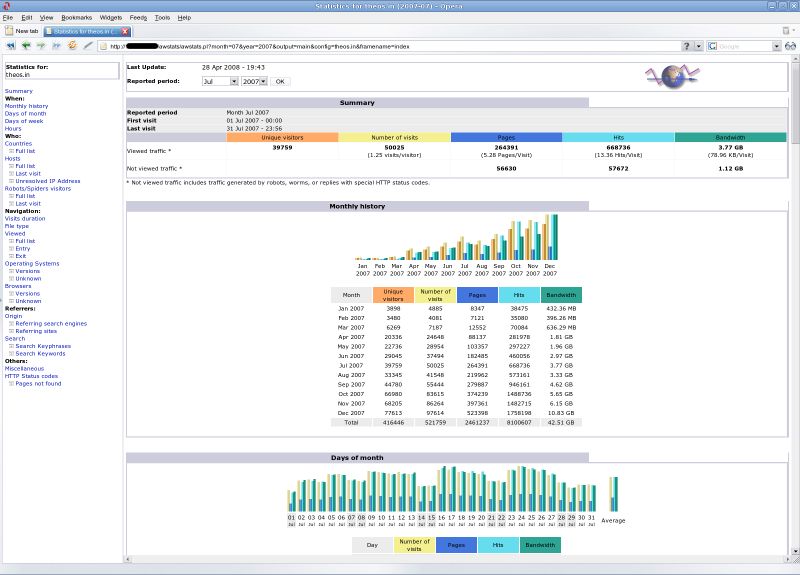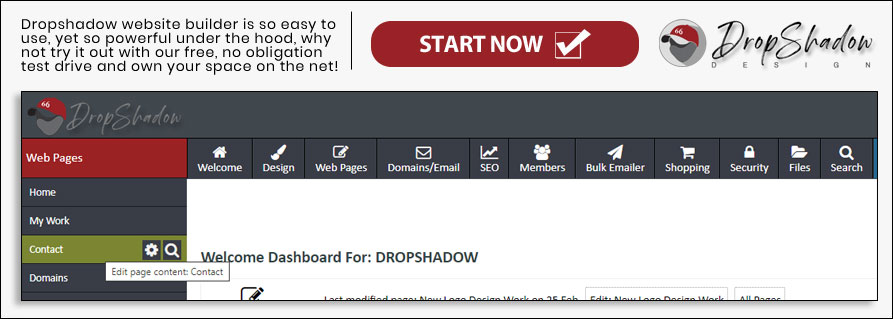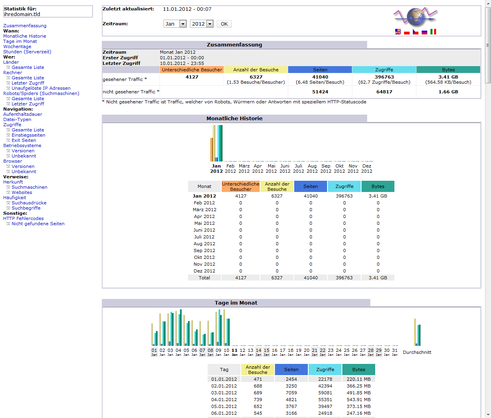


- #Awstats homepage install
- #Awstats homepage code
- #Awstats homepage professional
- #Awstats homepage free
#Awstats homepage install
When you download and install awstats (read the doc inside the package to achieve this) you get a hierarchy of directories and files, similar to this one. It doesn't matter what product are you using to serve your pages (Zope, Plone, PHP.) while you are logging into apache. It reads your unparsable Apache logs for you and uses that information to confeccioante a global vision of what's been going on.

#Awstats homepage professional
Whether if you are a professional or a eager user, AWStats deserves a try. But a nice (and free) way of getting statistics information is using AWStats, and if you have a server with multiple sites, then you don't have excuse. There are many statistics tools around that you can install in your sever and even you can find services to ease that pain. I like asking my server what country you come from, how much did you stay in the last visit, how did you arrive here, what is the most viewed page, how much bandwidth I am wasting, what spiders are coming in, what keysearches made you arrive here, why am I getting 404 errors.
#Awstats homepage code
Note that these statistics are public unless you secure them.Īdd the following code to /etc/crontab for each domain:Ġ */3 * * * /usr/lib/cgi-bin/ -config=yourdomain.It is surprising how much information you can get from your readers activity. Statistics for yourdomain.ext should now be available at:įor if you have multiple config files.

Options +ExecCGI -MultiViews +SymLinksIfOwnerMatch Otherwise, add this code inside the VirtualHost tag for each domain you want to monitor: Alias /awstatsclasses "/usr/share/awstats/lib/"Īlias /awstats-icon "/usr/share/awstats/icon/"Īlias /awstatscss "/usr/share/doc/awstats/examples/css" If you have no VirtualHosts set up, place the following code in '/etc/apache2/sites-available/default'. Navigate to /etc/apache2/sites-available/ cd /etc/apache2/sites-available/.In order to access Awstats, we have to tell Apache2 where it is. generate the initial stats for AWStats based on existing var/log/apache2/access.log: /usr/lib/cgi-bin/ -config=yourdomain.ext -updateįirst tell your apache to use mod_cgi if you haven't enabled it yet a2enmod cgi.make the following changes: LogFile="/var/log/apache2/access.log" SiteDomain="yourdomain.ext" HostAliases="localhost 127.0.0.1 yourdomain.ext".Open file with vi or nano: vi /etc/awstats/ or nano /etc/awstats/.Create a copy of nf for each domain: cp /etc/awstats/nf /etc/awstats/.Install AWStats with Synaptic or sudo apt-get install awstatsĪwstats configuration files in Ubuntu are located in /etc/awstats. For more help, get XChat and subscribe to channel "#awstats" on the Ubuntu Server. It assumes you already have an Apache2 web server up and running. The following documentation contains specific information on installing and configuring Awstats with Ubuntu and Apache2. It can analyze log files from all major server tools like Apache log files (NCSA combined/XLF/ELF log format or common/CLF log format), WebStar, IIS (W3C log format) and a lot of other web, proxy, wap, streaming servers, mail servers and some ftp servers. It uses a partial information file to be able to process large log files, often and quickly. This log analyzer works as a CGI or from command line and shows you all possible information your log contains, in few graphical web pages.
#Awstats homepage free
AWStats is a free powerful and featureful tool that generates advanced web, streaming, ftp or mail server statistics, graphically.


 0 kommentar(er)
0 kommentar(er)
